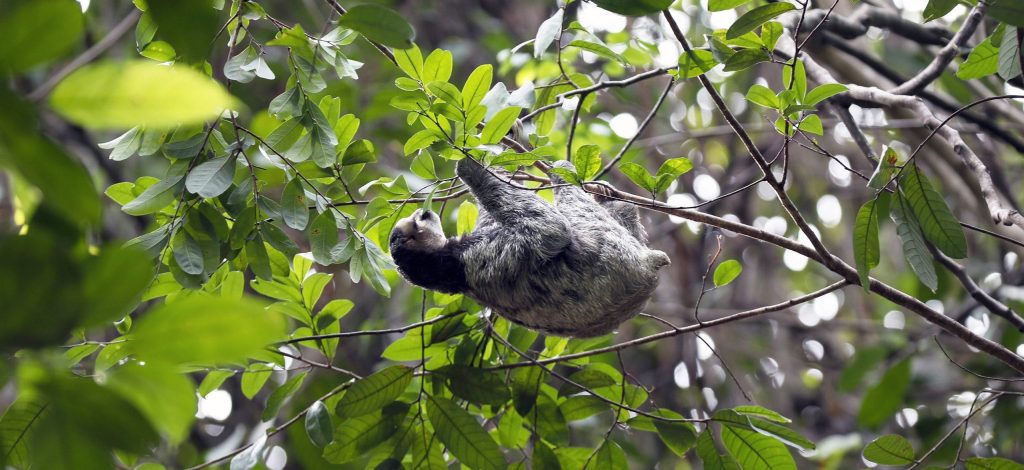
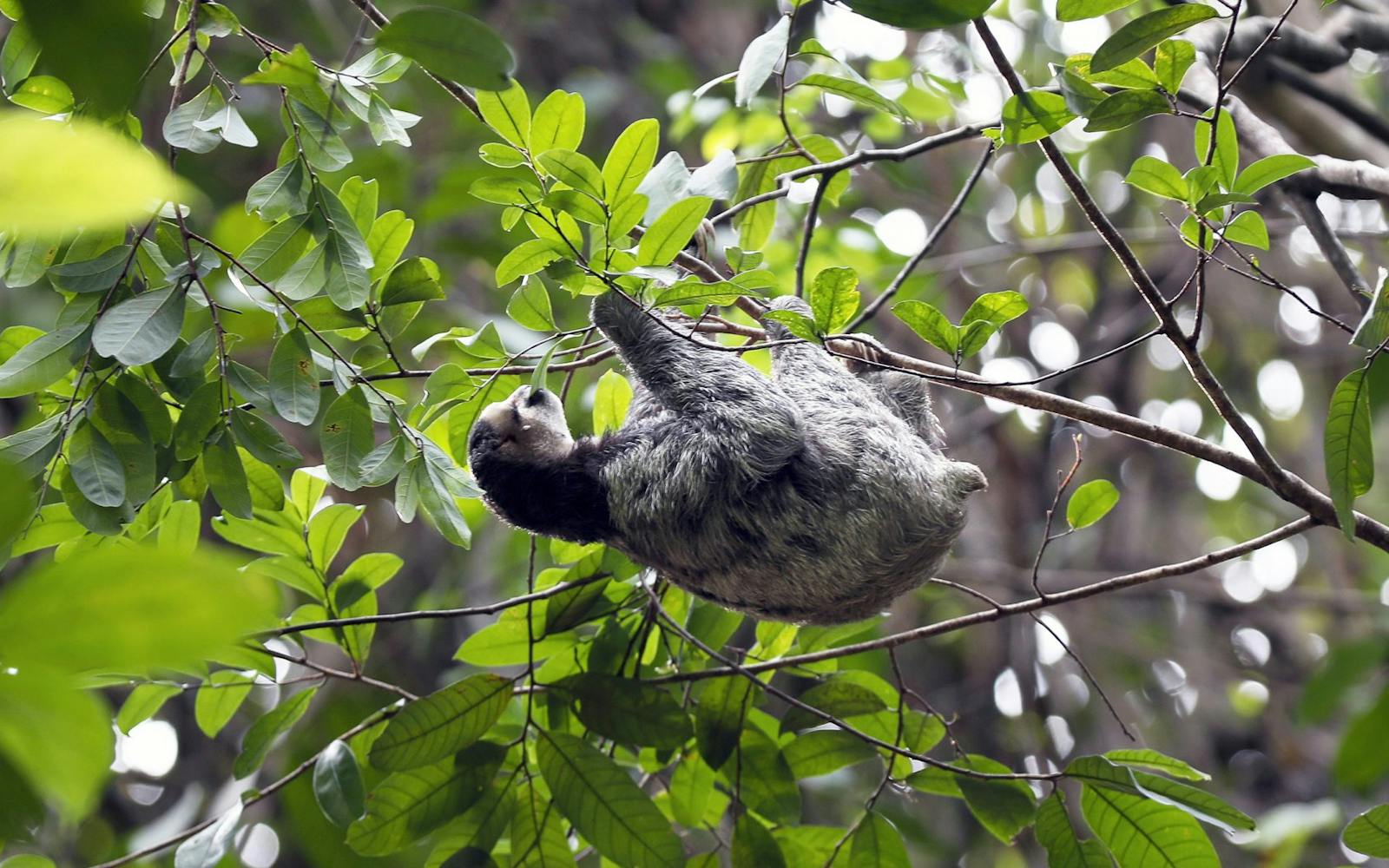
A youngster sloth hangs in a tree on the Bosque da Ciência in Manaus, Brazil. photograph: Michael Dantas/United Nations basis
As ecosystems and habitats degrade and disappear worldwide, biodiversity — the interconnectedness of all kinds of life on our planet — is in jeopardy. In gentle of a mannequin new worldwide settlement to shield our lands, ocean, and waters, discover what biodiversity actually means and what it is going to take to protect life on Earth.
From microscopic fungi to mega forests, “biodiversity” is the collective time period for the quantity of life on Earth in all its varieties. it is 4.5 billion years of evolution, embodied.
Biodiversity is answerable for our meals, our soil, our water, our climate, even the air we breathe. but regardless of being a very important basis for our collective future, biodiversity is usually misplaced amid conversations on local climate change — till recently.
In December 2022, leaders from almost 200 nations adopted a landmark UN settlement to reverse nature’s quick decline earlier than it’s too late. typically recognized as the Kunming-Montreal worldwide Biodiversity Framework, it requires safeguarding 30% of the planet’s land, ocean, and inland waters and consists of 23 fully different targets to assist restore and shield ecosystems and endangered species worldwide.
listed under are 12 issues it is best to know:
1. Biodiversity is larger than merely the complete quantity of species on Earth.
“it is actually extra complicated than that,” Dr. Thomas Lovejoy, the late ecologist, informed the United Nations basis in 2018. “It’s with reference to the genetic variety inside species, the differ of habitats, and the large organic objects typically recognized as biomes.”
This consists of the interactions that happen between species inside ecosystems – primordial relationships that type our environment in numerous, typically unseen methods.
“with out organic variety, there might even be no such factor as a fully different life on Earth — collectively with our personal,” he defined. “although we’re typically oblivious to it, this variety of life is what gives clear water, oxygen, and all fully different issues that discover your self being a factor of our weight loss program, as effectively as to clothes and shelter. It gives rather rather a lot of psychological advantages too, that are not a lot appreciated.”
2. We’re solely simply starting to know biodiversity’s affect and significance in our lives.
Earth’s many ecosystems rely upon a fragile, sophisticated, and consideration-grabbing tangle of life that, in lots of methods, stays a thriller. actually, the time period “organic variety” wasn’t launched to the scientific neighborhood till 1980 in a evaluation paper on species loss by Dr. Lovejoy. Scientists nonetheless haven’t recognized all kinds of life on the planet. New species are found yearly.
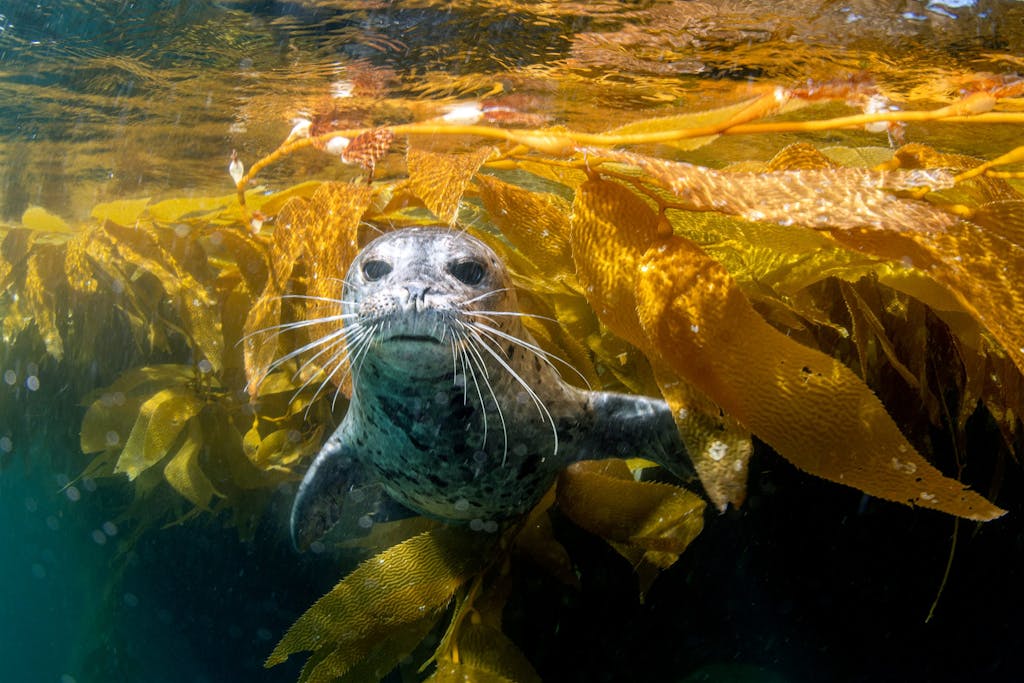
A harbor seal swims by means of kelp off the coast of Southern California’s Channel Islands. Seals are amongst the numerous hundreds of species that rely upon kelp forests for meals and shelter. photograph: Shutterstock/Joe Belanger
Take kelp, for event. These undersea forests current sustenance and shelter for marine species like chinook salmon, which, in flip, function a staple meals for orcas. And kelp additionally soak up extra carbon dioxide, which might additionally assist mitigate local climate change.
three. The planet’s biodiversity holds monumental, untapped potential for medical and scientific breakthroughs.
Lovejoy described every species on the planet as a novel set of options for a particular set of organic factors. “Whoever would have thought a bacterium from a Yellowstone sizzling spring would revolutionize forensic and diagnostic treatment, make the human genome mission doable, and confer advantages inside the trillion-dollar differ?” he wrote as a Senior Fellow on the United Nations basis, citing a beforehand unknown and seemingly inconsequential microbe found in 1966 that revolutionized genetic testing and immunization enchancment, collectively with the COVID-19 vaccine.
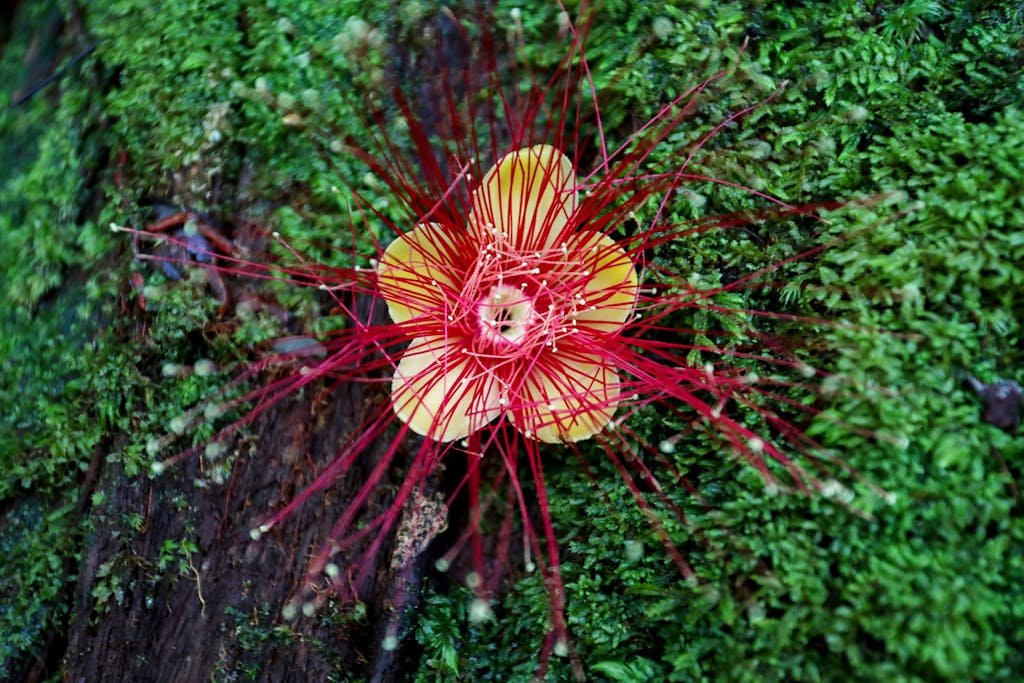
A flowering plant grows from a tree inside the Amazon Rainforest, shut to the evaluation station typically recognized as Camp forty one north of Manaus, Brazil. photograph: Michael Dantas/United Nations basis
immediately, one-fourth of all trendy medicines are derived from tropical crops, and 70% of all most cancers treatment are pure or bio-impressed merchandise. to this point decade, researchers in Nova Scotia found a soil fungus that will disarm antibiotic-resistant micro organism — a discovery that would possibly rework the fields of treatment and agriculture. the prospects for discovery and innovation are monumental.
4. local climate change and biodiversity are interconnected.
local climate change is inflicting biodiversity loss, and biodiversity loss is inflicting local climate change. right here’s how: Destroying and degrading ecosystems releases extra carbon dioxide into the ambiance than burning fossil fuels.
in the meantime, the outcomes of burning fossil fuels — rising worldwide temperatures, an enhance in wildfires, and ocean acidification, to name simply a few — are threatening habitats and wildlife alike. In late 2019 and early 2020, for event, larger than 60,000 koalas have been killed by wildfires in Australia so large that almost three billion animals died or have been displaced consequently. Earlier this yr, the Australian authorities formally listed koalas as an endangered species.
At COP 27 final yr, world leaders reached a historic settlement to create a “loss and harm” fund to assist communities that are already feeling local climate change’s disastrous impression, collectively with biodiversity loss and its impression on livelihoods.
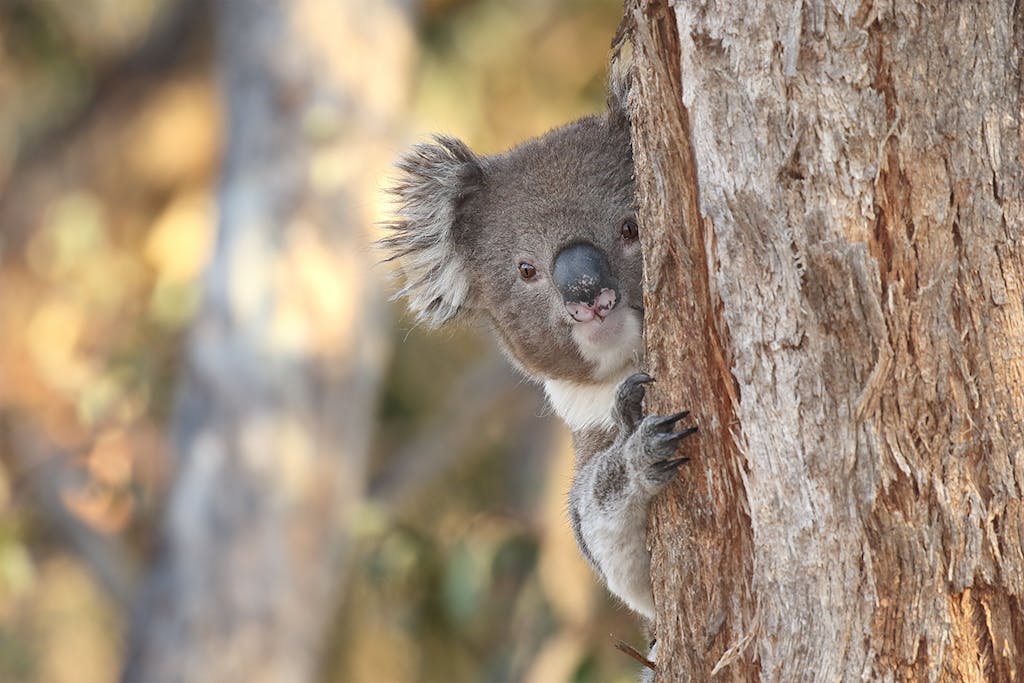
larger than 60,000 koalas have been killed by wildfires in Australia in late 2019 and early 2020. elevated wildfires and subsequent habitat loss are simply one among many penalties of local climate change. photograph: Patrick Kavanagh
5. Biodiversity would possibly additionally assist us adapt to local climate change.
The UN considers biodiversity our strongest pure protection in opposition to local climate change. Land and ocean ecosystems at present soak up 60% of human-triggered emissions, they typically’re the planet’s solely approach of storing large portions of carbon dioxide. Coastal wetlands, for event, shield in opposition to storm surges and flooding all by means of extreme climate whereas additionally storing carbon dioxide and creating oxygen.
in response to a joint estimate by the UN enchancment Programme and the federal authorities of Papua New Guinea, every dollar invested in environmental safety generates larger than $2,500 in so-recognized as ecosystem providers — water regulation, coastal safety, carbon storage, and fully different invisible capabilities that nature gives. It’s one among many causes that Papua New Guinea launched the most important-ever nationwide, impartial Biodiversity and local climate Fund to shield its standing as one among simply 17 “megadiverse” nations.
6. much less biodiversity means the subsequent menace of illness.
for many years, the scientific neighborhood has warned that biodiversity loss will enhance the unfold of infectious illness. Why? as a end result of extinction upsets the ecosystem in unpredictable methods, and the destruction of pure habitats will enhance interplay between people and wildlife. Biodiversity basically acts as a barrier between people and animal-borne illness.
Species that are inclined to survive logging, farming, mining, wildlife commerce and consumption, and fully different human actions behind widespread biodiversity loss are typically “vectors of illness” like mice and mosquitoes, which host pathogens that are ready to make the leap to people. It’s one among many the rationale why circumstances of Lyme illness inside the northeast u.s. have spiked in latest a long time: With fewer mammals to prey on, ticks are more and more searching for out people. actually, roughly seventy five% of rising infectious illnesses are zoonotic.
It’s additionally why researchers like Dr. Alessandra Nava and her crew of virus hunters at Brazil’s Fiocruz Amazônia are monitoring the unfold of illness in bats, monkeys, and rodents on the planet’s largest rainforest. Their purpose is to protect a step forward of future pandemics by larger understanding the pathogens contained contained in the jungle’s creatures earlier than they arrive in contact with people — encounters that develop to be extra seemingly as a end result of the human footprint expands.
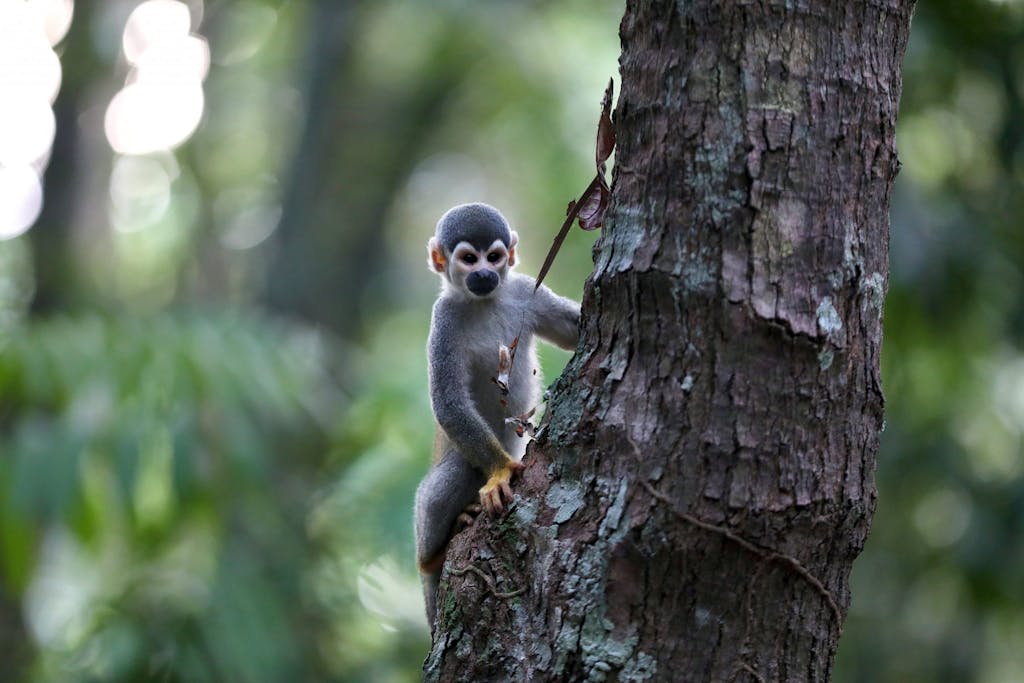
A golden-backed squirrel monkey on the Bosque da Ciência, a rainforest park in Manaus, Brazil. photograph: Michael Dantas/United Nations basis
7. Biodiversity on land relies upon on biodiversity in water.
sustaining the ocean’s ecological steadiness is essential for safeguarding biodiversity on land, as effectively as to sustaining our skill to feed future generations. The ocean performs a large position in regulating the planet’s climate and water and the air we breathe. furthermore it is the planet’s largest supply of protein, feeding larger than three billion people day-after-day who rely upon fish as a staple meals.
but the ocean stays a vastly unexplored ecological frontier. whereas scientists have recognized 200,000 marine species, the exact quantity is estimated to be inside the hundreds of hundreds. Unsustainable fishing practices, air pollution, local climate change, and habitat destruction are threatening creatures that will vanish earlier than we even knew they existed.
eight. Our planet’s biodiversity is on the brink.
Some 1 million species are threatened with extinction proper now. That’s larger than one other time in historic previous, they typically’re disappearing at a price that is 1,000 instances the norm. The offender is the means all by means of which most people devour, produce, journey, and dwell.
A 2019 UN report found that we have altered seventy five% of the planet’s terrestrial ambiance, forty% of its marine ambiance, and 50% of streams and rivers. almost three-fourths of our freshwater assets are devoted to crop or livestock manufacturing, which regularly means using pesticides, fertilizers, fuels, and antibiotics that pollute our rivers, streams, seas, and soil. day-after-day we’re destroying habitats and degrading large portions of soil and water by means of industrial manufacturing and agriculture whereas jeopardizing treasured pure assets that is in all probability misplaced eternally in our lifetime; to this point 20 years, we’ve misplaced half of the planet’s coral reefs. Deforestation inside the Amazon rainforest hit a file extreme final yr; some 18% is gone already, with scientists warning that we’re approaching a tipping level in direction of potential collapse.
9. Sustainability is the a means forward.
Such irresponsible manufacturing and consumption of our pure assets come at a catastrophic price. we’re destroying our planet at an unprecedented price and dropping an limitless quantity of crops, animals, bugs, and marine life inside the tactic — to the detriment of our personal future. Humanity’s well being and effectively-being are counting on a biodiverse planet.
fortuitously, examples are rising of a greener, extra sustainable approach of doing enterprise. round financial fashions have gotten extra widespread as firms understand the financial and environmental worth of reducing, reusing, and recycling their current chain. on the identical time, extra residents are demanding sustainable sourcing and socially simply labor practices from their consumer items. In 2022, the founding father of the out of doorways retailer Patagonia introduced plans to speculate your complete agency’s income in direction of combating local climate change. “If we have any hope of a thriving planet — a lot much less a enterprise — 50 years from now, it will take all of us doing what we will with the assets we have,” Yvon Chouinard wrote.
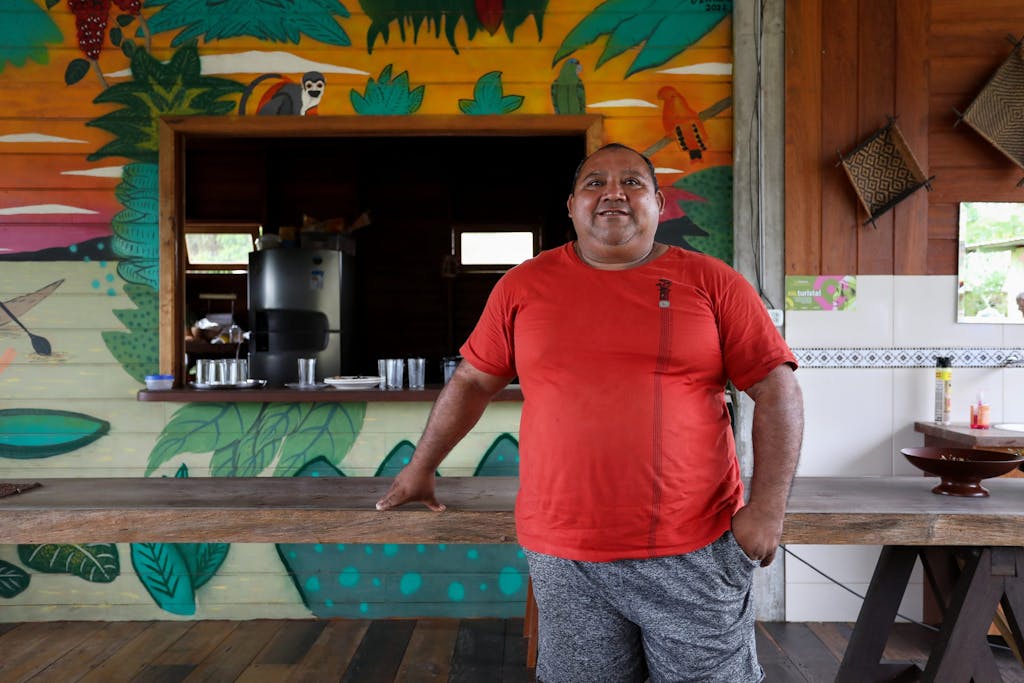
alongside Brazil’s Rio Negro, fourth-expertise logger Roberto Brito de Mendonça stands inside the eating lodge of his neighborhood’s ecotourism lodge. He retired from the household enterprise to assist start the operation, which encompasses a newly constructed classroom named in honor of Dr. Lovejoy. photograph: Michael Dantas/United Nations basis
10. Indigenous communities are essential.
For hundreds of years, Indigenous communities have served as a end result of the planet’s best environmental stewards. immediately, in response to the UN, Indigenous people handle larger than 20% of the planet’s land and eighty% of its biodiversity. “For us, it is not a ardour, or a job,” Hindou Ibrahim of the Mbororo tribe in Chad, an SDG (Sustainable enchancment purpose) Advocate and Indigenous rights activist, informed the UN final yr. “it is our life-style. And that’s what we have performed for all generations.”
In 2015, the UN created the native Communities and Indigenous Peoples Platform to make sure that their formal participation in worldwide negotiations on local climate change.
eleven. Conservation is important.
one among our most promising options is preservation. Restoring degraded ecosystems alone might current as a lot as one-third of the local climate mitigation wished to protect the Earth from warming too far above pre-industrial ranges. this means creating protected areas, curbing extractive capitalism, and restoring the planet’s monumental quantity of degraded land.
people throughout the globe are main efforts to simply do that. One inspiring event is Rita Mesquita, who expanded the quantity of protected rainforest in Brazil by seventy six% all by means of her time inside the nation’s Ministry of the ambiance. immediately, she oversees purposes that encourage residents and visitors alike in Manaus to work together with the encircling Amazon rainforest.
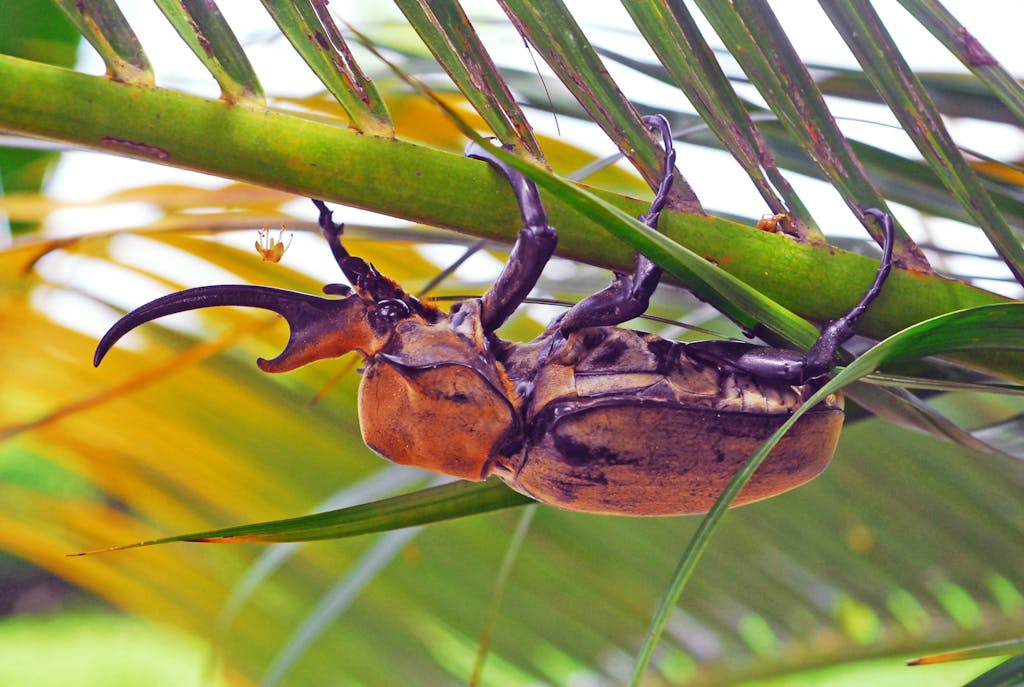
A Rhinoceros Beetle in Costa Rica’s nationwide Park Tortuguero. The rhino beetle is probably one among many strongest bugs on the planet with relation to its physique measurement, however as a end result of its tropical lowland habitat has been deforested and overcut, it is struggling to survive. photograph: GRID-Arendal/Peter Prokosch
12. we’d like cooperation — and revolution — in any respect ranges.
we’d like partnerships amongst nations, communities, buyers, and firms. And we’re seeing indicators of progress day-after-day. actually, at COP 27, the Governments of Brazil, Democratic Republic of Congo, and Indonesia introduced an alliance to shield their respective rainforests. Their historic settlement might pave the means all by means of which for extra multilateral movement and impression. Coming solely a month later, the Kunming-Montreal worldwide Biodiversity Framework represents an infinite and prolonged-awaited step in direction of halting extinction fees that some scientists are calling an existential disaster akin to local climate change.
an infinite a factor of the reply to the biodiversity problem is in all probability transforming how we strategy the pure world and our place inside it. As Dr. Lovejoy informed the UN basis in 2018, “There should be a vital shift in notion from pondering of nature as one factor with a fence round it inside the course of an expansive, human-dominated panorama … to eager about embedding our aspirations in nature.”

